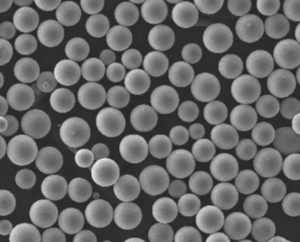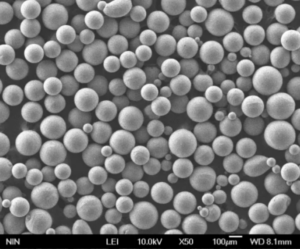Introducción
Polvo de hierro de gran pureza es un material fundamental utilizado en diversas industrias, desde la metalurgia hasta la electrónica. Pero, ¿qué lo hace tan especial? ¿En qué se diferencia del polvo de hierro normal? En esta guía, nos adentraremos en el mundo del polvo de hierro de alta pureza, explorando su composición, características, aplicaciones y mucho más. Tanto si es un profesional experimentado como un curioso, este artículo está diseñado para responder a todas sus preguntas sobre el polvo de hierro de alta pureza.
Visión general del hierro en polvo de gran pureza
El polvo de hierro de alta pureza es polvo de hierro con un nivel de pureza del 99,9% o superior. Sus propiedades únicas lo hacen ideal para aplicaciones especializadas que requieren alta resistencia, excelente conductividad o propiedades magnéticas específicas. La producción de polvo de hierro de alta pureza implica procesos avanzados como la atomización o la reducción, que dan como resultado un polvo fino con partículas de tamaño y forma consistentes.
Características principales del hierro en polvo de gran pureza
- Pureza: Por lo general, 99,9% o más
- Tamaño de partícula: Puede variar desde unos pocos micrómetros hasta varios cientos de micrómetros
- Forma: Esférica o irregular, según el método de producción
- Propiedades magnéticas: Alta magnetización de saturación
- Conductividad eléctrica: Excelente por su alto grado de pureza

Composición y propiedades del polvo de hierro de gran pureza
| Propiedad | Descripción |
|---|---|
| Pureza | 99.9% o superior |
| Tamaño de partícula | De unos pocos micrómetros a varios cientos de micrómetros |
| Forma | Esférica o irregular |
| Saturación magnética | Alta |
| Conductividad eléctrica | Excelente gracias a las impurezas mínimas |
| Densidad | Varía en función del tamaño y la forma de las partículas |
| Superficie | Mayor en polvos más finos |
| Contenido de oxígeno | Bajo, lo que garantiza una oxidación mínima |
Tipos y modelos de Hierro en polvo de gran pureza
Existen varios tipos de polvo de hierro de alta pureza, cada uno adaptado a aplicaciones específicas. Las diferencias entre estos tipos radican en el tamaño de las partículas, la forma y los métodos de producción. A continuación, analizamos algunos de los modelos más comunes disponibles en el mercado:
1. Polvo de hierro atomizado
El polvo de hierro atomizado se produce mediante el proceso de atomización, en el que el hierro fundido se dispersa en finas gotitas que se solidifican hasta convertirse en polvo. Este tipo suele tener forma esférica y se utiliza en aplicaciones en las que la fluidez y la densidad de empaquetamiento son importantes.
- Pureza: 99,9% o superior
- Aplicaciones: Pulvimetalurgia, materiales magnéticos, moldeo por inyección de metales (MIM)
2. Hierro reducido en polvo
El polvo de hierro reducido se obtiene reduciendo mineral de hierro o cascarilla de laminación en una atmósfera de hidrógeno. Suele tener una forma irregular y se utiliza en aplicaciones en las que la superficie es crítica, como en reacciones químicas o como catalizador.
- Purezaentre el 99,5% y el 99,9%
- Aplicaciones: Síntesis química, industria farmacéutica, materiales magnéticos
3. Hierro electrolítico en polvo
El polvo de hierro electrolítico se produce mediante la electrólisis del hierro. Con este método se consigue una pureza muy elevada y una distribución controlada del tamaño de las partículas. Suele utilizarse en aplicaciones que requieren gran precisión y pureza.
- Pureza: 99,9% o superior
- Aplicaciones: Electrónica, fabricación de baterías, imanes de alto rendimiento
4. Polvo de hierro carbonilado
El polvo de hierro carbonílico se produce descomponiendo pentacarbonilo de hierro. Este método crea partículas esféricas ultrafinas, a menudo utilizadas en aplicaciones que requieren una alta magnetización y mínimas impurezas.
- Pureza: 99,9% o superior
- Aplicaciones: Electrónica, inductores, blindaje electromagnético
5. Hierro en polvo atomizado en agua
Similar al polvo de hierro atomizado, pero utilizando agua como medio de dispersión, el polvo de hierro atomizado con agua tiene formas irregulares y se utiliza cuando se necesita un equilibrio entre coste y rendimiento.
- Purezaentre el 99,5% y el 99,9%
- Aplicaciones: Pulvimetalurgia, piezas de automóvil, moldeo por inyección de metales (MIM)
6. Polvo de hierro atomizado con gas
El polvo de hierro atomizado por gas, creado utilizando gases inertes para dispersar el hierro fundido, suele tener una forma esférica más uniforme y se utiliza en aplicaciones de alto rendimiento.
- Pureza: 99,9% o superior
- Aplicaciones: Aeroespacial, impresión 3D, materiales magnéticos
7. Hierro en polvo ultrafino
El polvo de hierro ultrafino se caracteriza por su tamaño de partícula extremadamente pequeño, a menudo en el rango nanométrico. Se utiliza en aplicaciones avanzadas como revestimientos, tintas y nanotecnología.
- Pureza: 99,9% o superior
- Aplicaciones: Recubrimientos, nanotecnología, tintas conductoras
8. Polvo de hierro de alta densidad
El polvo de hierro de alta densidad está diseñado para aplicaciones que requieren la máxima densidad de empaquetamiento y se utiliza normalmente en la metalurgia de alto rendimiento.
- Pureza99,7% a 99,9%
- Aplicaciones: Aeroespacial, automoción, maquinaria pesada
9. Polvo magnético de hierro
El polvo de hierro magnético se procesa especialmente para mejorar sus propiedades magnéticas y se utiliza en aplicaciones como inductores, transformadores y blindaje magnético.
- Pureza: 99,9% o superior
- Aplicaciones: Transformadores, inductores, blindaje magnético
10. Hierro en polvo pulverizado
El polvo de hierro conformado por pulverización se crea mediante un proceso de solidificación rápida, lo que da lugar a una microestructura única que proporciona propiedades mecánicas mejoradas.
- Pureza: 99,8% a 99,9%
- Aplicaciones: Herramientas, piezas estructurales, aleaciones de alto rendimiento
Aplicaciones del polvo de hierro de gran pureza
El polvo de hierro de alta pureza se utiliza en una amplia gama de industrias debido a sus excepcionales propiedades. Sus aplicaciones abarcan desde la metalurgia tradicional hasta la electrónica de vanguardia y la nanotecnología.
Tabla: Aplicaciones del polvo de hierro de gran pureza
| Área de aplicación | Descripción |
|---|---|
| Pulvimetalurgia | Se utiliza para crear piezas de alta resistencia y precisión mediante sinterización y otros procesos. |
| Electrónica | Esencial en la fabricación de componentes como inductores, condensadores y transformadores. |
| Materiales magnéticos | Se utiliza para fabricar imanes de alto rendimiento para diversas aplicaciones, como motores y sensores. |
| Síntesis química | Sirve de catalizador en las reacciones químicas y se utiliza en la producción de materiales sintéticos. |
| Productos farmacéuticos | Se emplea en la fabricación de ciertas fórmulas de medicamentos debido a su gran pureza. |
| Nanotecnología | Se utiliza en materiales y revestimientos avanzados, a menudo a escala nanométrica. |
| Fabricación de baterías | Se utiliza en la fabricación de baterías de alto rendimiento, especialmente en los materiales del cátodo y el ánodo. |
| Fabricación aditiva | Imprescindible para la impresión 3D y otras técnicas de fabricación aditiva, ya que proporciona polvos finos y uniformes. |
| Blindaje electromagnético | Se utiliza en la creación de materiales que protegen los dispositivos electrónicos de las interferencias electromagnéticas. |
| Aleaciones de alto rendimiento | Se añade a las aleaciones para mejorar sus propiedades mecánicas, especialmente en aplicaciones aeroespaciales y de automoción. |




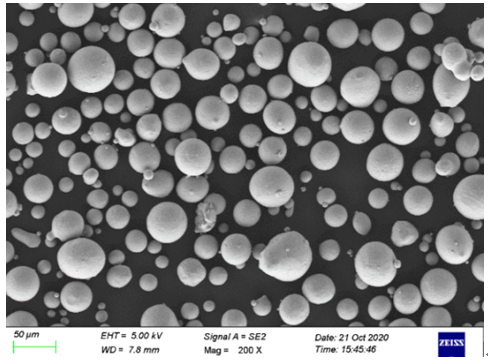
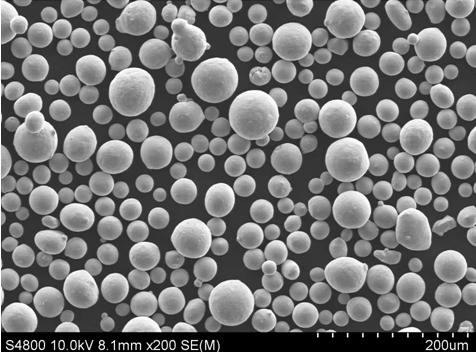
Especificaciones, tamaños, calidades y normas
A la hora de seleccionar polvo de hierro de alta pureza, es fundamental conocer las especificaciones, tamaños, grados y normas aplicables. Estos parámetros pueden variar en función de la aplicación prevista, y conocer la elección correcta puede influir significativamente en el rendimiento.
Tabla: Especificaciones del polvo de hierro de gran pureza
| Especificación | Descripción |
|---|---|
| Niveles de pureza | 99.5% a 99,9% o superior |
| Gama de tamaños de partículas | De nanómetros (nm) a varios cientos de micrómetros (µm) |
| Estándares de grado | ASTM, ISO, JIS, según la industria |
| Formas disponibles | Esférica, irregular, en escamas |
| Método de producción | Atomización, reducción, electrolítico, carbonilo |
| Gama de densidades | Depende del tamaño y la forma de las partículas; normalmente 2,5-7,8 g/cm³ |
| Propiedades magnéticas | Alta magnetización de saturación, baja coercitividad |
| Conductividad | Alta conductividad eléctrica gracias a un mínimo de impurezas |
Tabla: Grados de hierro en polvo de gran pureza
| Grado | Nivel de pureza | Aplicaciones |
|---|---|---|
| Grado A | 99.9% o superior | Electrónica, dispositivos médicos, imanes de alto rendimiento |
| Grado B | 99.7% a 99,9% | Pulvimetalurgia, síntesis química |
| Grado C | 99.5% a 99,7% | Fabricación aditiva, componentes de automoción |
| Grado D | 99.0% a 99,5% | Metalurgia general, utillaje, piezas estructurales |
Proveedores y precios Hierro en polvo de gran pureza
La disponibilidad y el coste del polvo de hierro de gran pureza pueden variar significativamente en función del proveedor, la región y los requisitos específicos del producto. A continuación se ofrece una guía de algunos de los principales
proveedores y sus precios.
Tabla: Proveedores y precios del hierro en polvo de gran pureza
| Proveedor | Ubicación | Gama de productos | Gama de precios (por kg) |
|---|---|---|---|
| Höganäs AB | Suecia | Polvos atomizados, reducidos, electrolíticos | $50 – $200 |
| JFE Steel Corporation | Japón | Polvo de hierro de gran pureza para electrónica y metalurgia | $80 – $250 |
| Polvos metálicos de Río Tinto | Canadá | Polvos atomizados por gas y agua | $60 – $180 |
| BASF | Alemania | Polvo de hierro carbonilado, polvos ultrafinos | $100 – $300 |
| Pulvimetalurgia GKN | EE.UU. | Polvos de hierro magnéticos de alta densidad | $70 – $220 |
| Mitsui Minería y Fundición | Japón | Polvos de pureza ultra alta formados por pulverización | $90 – $280 |
| Grupo CNPC Powder | China | Polvos reducidos, atomizados, electrolíticos | $40 – $150 |
| Acero Kobe | Japón | Calidades especiales para aplicaciones avanzadas | $110 – $320 |
| Tecnología de materiales Sandvik | Suecia | Polvos de hierro de alto rendimiento para la industria aeroespacial y del automóvil | $120 – $350 |
| Elementos americanos | EE.UU. | Nanopartículas, polvos ultrafinos | $200 – $500 |
Ventajas y limitaciones del hierro en polvo de gran pureza
Como cualquier material, el polvo de hierro de alta pureza tiene sus propias ventajas y limitaciones. Comprenderlas puede ayudarle a seleccionar el tipo adecuado para su aplicación.
Tabla: Ventajas y limitaciones del hierro en polvo de gran pureza
| Ventajas | Limitaciones |
|---|---|
| Alta resistencia | Ideal para aplicaciones que requieren propiedades mecánicas robustas |
| Excelentes propiedades magnéticas | Perfecto para materiales magnéticos y blindaje electromagnético |
| Alta pureza | Reduce las impurezas, mejorando la conductividad y el rendimiento |
| Aplicaciones versátiles | Puede utilizarse en una amplia gama de industrias, desde la electrónica hasta la farmacéutica |
| Personalización | Disponibles en varios grados, tamaños y formas para adaptarse a necesidades específicas |
| Coste | Los niveles de pureza más elevados pueden resultar caros |
| Complejidad de la producción | Requiere métodos de producción avanzados, lo que puede limitar la disponibilidad |
| Proveedores limitados | No tan disponible como los polvos de hierro de menor calidad |
| Sensibilidad a la oxidación | El hierro de gran pureza puede ser más propenso a la oxidación, por lo que requiere un almacenamiento cuidadoso |
Comparación del polvo de hierro de gran pureza con otros polvos metálicos
¿Cómo se compara el polvo de hierro de alta pureza con otros tipos de polvos metálicos? Comparémoslo con algunas alternativas de uso común:
Tabla: Comparación del polvo de hierro de gran pureza con otros polvos metálicos
| Polvo metálico | Nivel de pureza | Aplicaciones | Ventajas | Limitaciones |
|---|---|---|---|---|
| Hierro en polvo de gran pureza | 99.5% a 99,9% o superior | Electrónica, metalurgia, síntesis química | Alta resistencia, excelentes propiedades magnéticas, alta conductividad | Mayor coste, sensible a la oxidación |
| Polvo de aluminio | 99.0% a 99,8% | Aleaciones ligeras, pirotecnia, revestimientos | Ligereza, buena conductividad, resistencia a la corrosión | Menor fuerza, menos propiedades magnéticas |
| COBRE EN POLVO | 99.9% o superior | Tintas conductoras, electrónica, soldadura fuerte | Excelente conductividad, buenas propiedades térmicas | Mayor coste, propenso a la oxidación |
| Níquel en polvo | 99,0% a 99,9% | Aleaciones de alto rendimiento, baterías | Resistencia a la corrosión, buenas propiedades magnéticas | Caro, disponibilidad limitada |
| Polvo de acero inoxidable | 95% a 99,5% | Herramientas, impresión 3D, piezas estructurales | Resistencia a la corrosión, alta resistencia | Más pesados, menos conductores que los metales puros |
| Titanio en polvo | 99.5% a 99,9% | Aeroespacial, implantes médicos, fabricación aditiva | Elevada relación resistencia/peso, biocompatible | Muy caro, difícil de tramitar |
| Cobalto en polvo | 99,0% a 99,9% | Superaleaciones, baterías, materiales magnéticos | Resistencia a altas temperaturas, buenas propiedades magnéticas | Caro, disponibilidad limitada |
| Polvo de plata | 99.9% o superior | Electrónica, dispositivos médicos, tintas conductoras | Mejor conductividad eléctrica, propiedades antimicrobianas | Extremadamente caro, propenso al deslustre |
| Zinc en polvo | 99.0% a 99,5% | Galvanización, baterías, productos farmacéuticos | Buena resistencia a la corrosión, económico | Menor resistencia, menor conductividad |
| Magnesio en polvo | 99.0% a 99,5% | Aleaciones ligeras, pirotecnia, baterías | Muy ligero, buena maquinabilidad | Altamente reactivo, inflamable |
Cómo elegir el Hierro en polvo de gran pureza para su aplicación
Elegir el polvo de hierro de alta pureza adecuado para su aplicación puede ser una decisión compleja. He aquí algunos factores clave a tener en cuenta:
1. Nivel de pureza
El nivel de pureza requerido depende de su aplicación. Por ejemplo, en electrónica y farmacia, donde las impurezas pueden afectar significativamente al rendimiento, necesitará polvo de hierro con una pureza del 99,9% o superior. En cambio, para la metalurgia general, puede bastar con un nivel de pureza ligeramente inferior.
2. Tamaño y forma de las partículas
El tamaño y la forma de las partículas pueden influir en la fluidez, la densidad de empaquetamiento y la superficie del polvo. Los polvos esféricos suelen preferirse en aplicaciones que requieren una buena fluidez, como el moldeo por inyección de metales, mientras que las partículas irregulares pueden ser mejores para la síntesis química por su mayor superficie.
3. Propiedades magnéticas
Si su aplicación implica materiales magnéticos, céntrese en polvos de hierro con alta saturación magnética y baja coercitividad. Los polvos de hierro magnéticos y los polvos de hierro carbonílicos suelen ser las mejores opciones para este tipo de aplicaciones.
4. Método de producción
El método de producción puede afectar tanto al coste como a las propiedades del polvo de hierro. Por ejemplo, los polvos atomizados suelen ser más caros pero ofrecen mejor fluidez y densidad de empaquetamiento, mientras que los polvos reducidos podrían ser más rentables pero menos uniformes.
5. Coste y disponibilidad
Por último, tenga en cuenta su presupuesto y la disponibilidad del grado específico de polvo de hierro de alta pureza. Aunque los polvos especiales de alta pureza ofrecen un rendimiento superior, también tienen un coste más elevado y pueden tener proveedores limitados.
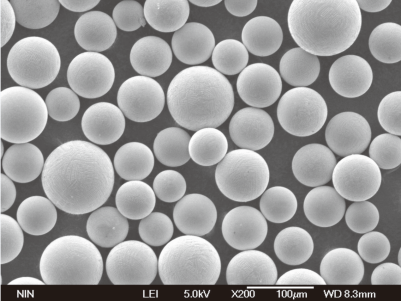
preguntas frecuentes
¿Qué es el polvo de hierro de gran pureza?
El polvo de hierro de alta pureza es un polvo fino de hierro con un nivel de pureza del 99,9% o superior. Se utiliza en diversas aplicaciones que requieren propiedades específicas como alta resistencia, excelente conductividad o características magnéticas.
¿Cómo se fabrica el polvo de hierro de gran pureza?
El polvo de hierro de alta pureza puede producirse mediante varios métodos, como la atomización, la reducción, la electrólisis y la descomposición del pentacarbonilo de hierro. La elección del método depende del tamaño de partícula, la forma y el grado de pureza deseados.
¿Cuáles son las aplicaciones habituales del polvo de hierro de alta pureza?
El polvo de hierro de alta pureza se utiliza en industrias como la electrónica, la pulvimetalurgia, los materiales magnéticos, la síntesis química, la farmacéutica y la fabricación aditiva. Sus aplicaciones abarcan desde imanes de alto rendimiento hasta materiales avanzados para baterías.
¿Cuál es la diferencia entre polvo de hierro atomizado y reducido?
El polvo de hierro atomizado se produce dispersando el hierro fundido en finas gotitas, lo que da lugar a partículas esféricas, mientras que el polvo de hierro reducido se fabrica reduciendo el mineral de hierro en una atmósfera de hidrógeno, lo que da lugar a partículas de forma irregular. Se prefieren los polvos atomizados por su fluidez, mientras que los polvos reducidos se utilizan por su mayor superficie.
¿Cómo elegir el polvo de hierro de gran pureza adecuado para mis necesidades?
Tenga en cuenta factores como el nivel de pureza requerido, el tamaño y la forma de las partículas, las propiedades magnéticas, el método de producción y el coste. Su aplicación específica determinará la mejor elección de polvo de hierro de alta pureza.
¿Dónde puedo comprar hierro en polvo de gran pureza?
El polvo de hierro de alta pureza está disponible en varios proveedores de todo el mundo, como Höganäs AB, JFE Steel Corporation, Rio Tinto Metal Powders, BASF y GKN Powder Metallurgy. Los precios varían según el grado, el nivel de pureza y el proveedor.
¿Cuáles son las ventajas de utilizar polvo de hierro de gran pureza?
El polvo de hierro de alta pureza ofrece ventajas como una gran resistencia, excelentes propiedades magnéticas, alta conductividad y versatilidad en las aplicaciones. Sin embargo, también presenta limitaciones como su mayor coste y su sensibilidad a la oxidación.
¿Puede utilizarse polvo de hierro de alta pureza en la impresión 3D?
Sí, el polvo de hierro de alta pureza se utiliza en la fabricación aditiva, incluida la impresión 3D, donde su fino tamaño de partícula y sus propiedades constantes son esenciales para producir piezas de alta calidad.
¿Cuál es el precio del polvo de hierro de gran pureza?
El precio del polvo de hierro de alta pureza puede oscilar entre 40 y 500 dólares por kilogramo, según el grado de pureza, el tamaño de las partículas, el método de producción y el proveedor.
¿Cuáles son las propiedades magnéticas del polvo de hierro de alta pureza?
El polvo de hierro de alta pureza suele presentar una alta magnetización de saturación y una baja coercitividad, lo que lo hace adecuado para su uso en materiales magnéticos y blindaje electromagnético.
